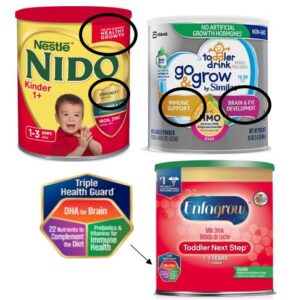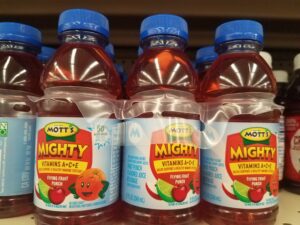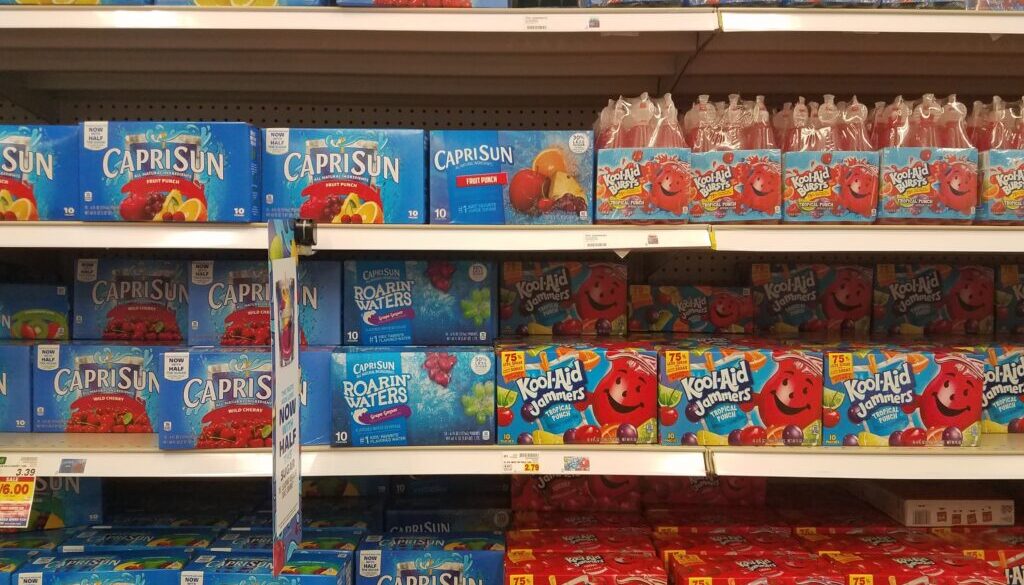Video ‘countermarketing’ can help cut demand for unhealthy food, study finds
Viewing 45-second videos that explain common misperceptions about toddler milks and fruit drinks reduced caregivers’ intentions to serve these sweetened beverages to their young children, according to a study published today in the American Journal of Public Health.
The study’s findings suggest that countermarketing messages could reduce demand for unhealthy foods.
“We were delighted at the findings,” said Frances Fleming-Milici, a researcher with the Rudd Center for Food Policy & Health at the University of Connecticut and an author of the study. “We’re hoping that we have an opportunity to see effects on actual behavior and long-term behavior.”
“There isn’t a lot of research in countermarketing in the area of highly processed food, junk food,” said Chris Palmedo, an associate professor at the City University of New York School of Public Health. “[The study] confirms the gradual progress that research is making in this area.”
Previous research suggests many parents do not realize popular fruit drinks for children often contain less than 10% juice and can be packed with added sugars and diet sweeteners. Health claims on toddler milks, which are also sweetened, are not backed by science, according to the Rudd Center.

The American Academy of Pediatrics advises giving children under five mostly water and plain milk to drink, stating that sugar-sweetened beverages are “detrimental to child health,” artificial sweeteners’ health effects on kids are “not well-understood,” and toddler milks are “unnecessary for most children and provide no nutritional benefit over a healthy, balanced eating plan.”
“Marketing is very confusing,” said Fleming-Milici. “When you hear nutrition education, the advice is often what you want to follow. But when you go out into the world and are purchasing a product, the messages you’re receiving can really confuse you and products appear healthy that are not.”
“To really get deeply into the products themselves is something that traditional health communication doesn’t do,” said Palmedo. “I think people are hungry for more information about these kinds of juices and sweetened milk products, and we’re not valuing people’s intelligence and interest in learning more about the things that they’re consuming.”
Put to the test
To test whether short videos about the ingredients in kids’ drinks could help parents make more informed choices, Fleming-Milici and colleagues first conducted a series of focus groups in Washington, DC and Hartford, Connecticut with a diverse group of parents whose children ranged in age from 9 to 36 months.
“When we discussed what the actual ingredients were in the drinks, that claims on the packaging really weren’t supported by science, [the parents] were surprised and angry,” said Fleming-Milici.
In collaboration with the organization 1,000 Days, the researchers developed two short video explaining the ingredients in toddler milks and kids’ fruit drinks . To test the efficacy of the videos, the researchers randomly assigned 600 diverse caregivers of older infants and toddlers to view either the toddler milk and fruit drink videos or two videos with the same tone and length that offered recommendations for children’s screen time. About two-thirds of the caregivers reported serving fruit drinks to their child in the week leading up to the study and half reported serving toddler milks.
Those that watched the kids’ drink countermarketing videos were more likely to report in a survey that they intended to cut back on serving both sweetened beverages.

The videos cost less than $0.01 per view to disseminate on Facebook and have now been viewed by over 775,000 parents and grandparents.
“We’d like to see the food environment change considerably,” said Fleming-Milici. “Until then, countermarketing campaigns are a tool to point out the misleading marketing that hides the true ingredients of unhealthy products and, hopefully, get people to reject these marketing efforts by not purchasing a product.”
Beyond sugary beverages
“Sugary drinks are not the only problem,” added Fleming-Milici. “Countermarketing campaigns have the potential to be used to reduce consumption of other unhealthy foods.”
A 2022 report from the Access to Nutrition Initiative found that only about one-third of US food and beverage sales from 11 top companies come from products that are considered healthy. And beyond toddler milks and fruit drinks, some foods marketed for children are less healthy than their labels suggest. The Environmental Working Group has found high concentrations of pesticides in fruit leather, a popular kids’ snack, and in some conventionally grown fruits and vegetables.
Fleming-Milici thinks that learning the facts about products and the techniques marketers use to misrepresent them can empower people to make better choices about all kinds of grocery store products. But she acknowledges that public health groups may struggle to garner financial support for countermarketing campaigns, which often call out specific brands.
“Industry may fund efforts for health-related things, but they don’t want any money wrapped up in something that would potentially reduce purchases of their products,” she said.
(Photo by Shannon Kelleher.)
 EWG
EWG


